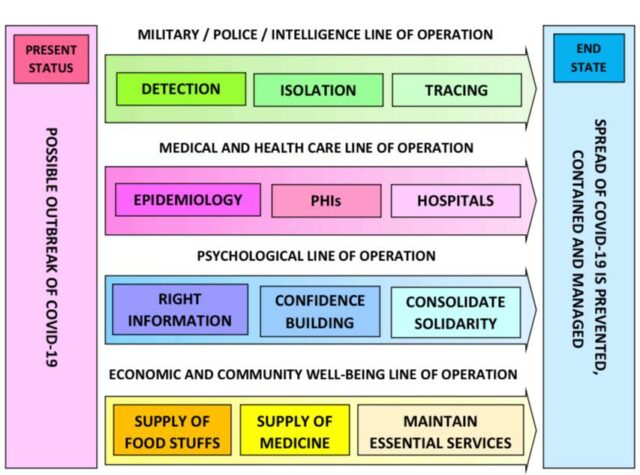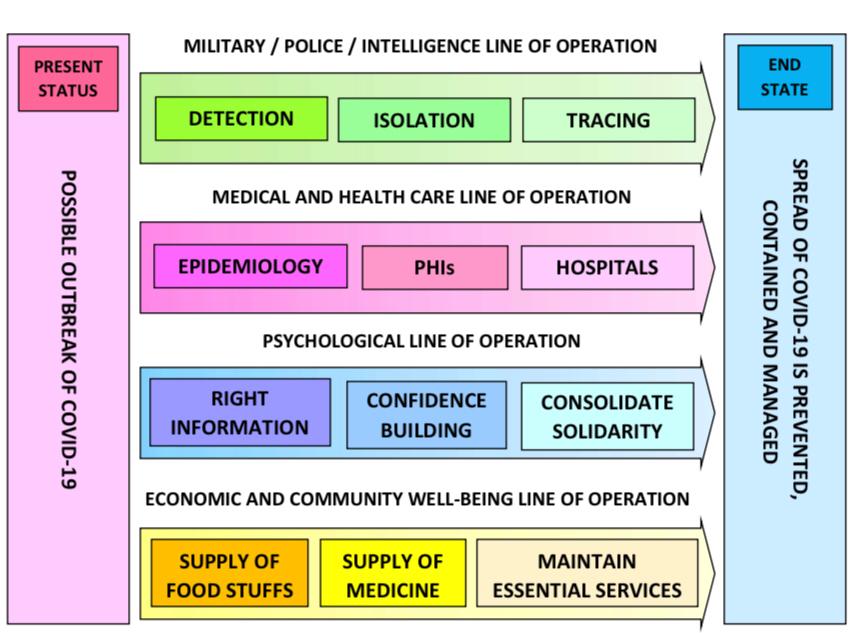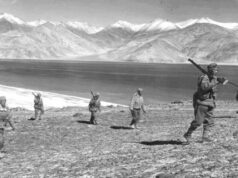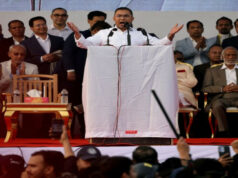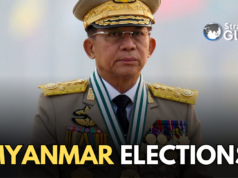NEW DELHI: As Europe and America struggle to deal with the raging Chinese virus pandemic, success stories are emerging from smaller countries in Asia such as Vietnam and Sri Lanka that have managed to control the spread of the disease and have come up with measures to mitigate the likely after-effects too.
While you can listen to the Vietnamese ambassador to India elaborating on his country’s efforts , it is important to detail the Sri Lanka model that has so far proved to be effective in keeping the numbers down.
The success of the Sri Lankan model is also reflected in the figures. As of 10 am on 24 April, Sri Lanka had a cumulative figure of 367 cases. Currently, there are only 253 active cases, 107 people have so far recovered and the death toll is at 7.
So how did the emerald island do it? Sources in the Government of Sri Lanka said a three-pronged approach has helped it so far: anticipation, detection and action.
Taking a whole-of-government approach, the Sri Lankan President Gotabaya Rajapaksa, a hands-on leader who approaches every problem in a mission mode, laid down the principle of “proactive intervention to prevent any outbreak of COVID-19 within Sri Lanka”.
One instance of the pro-active approach happened on Thursday when one sailor of the Sri Lankan navy was found positive in one of the bases. Immediately, all his close contacts were examined and put in isolation. Sixty other sailors who had proceeded on leave were traced and contacted in their respective homes and put under self-quarantine in less than 12 hours, effectively containing the spread.
Officials at the forefront of the anti-Covid-19 efforts in the island nation pointed out that the government acted well before the pandemic hit the region. It established the Action Committee for COVID-19 on January 26, a day before the detection of the first diagnosed patient in Sri Lanka, a Chinese national who came as a tourist. This patient was treated at the National Institute of Infectious Diseases (NIID) and was discharged completely recovered on February 19. This incident prompted the Sri Lankan government to act proactively and strategise actions for a possible breakout of COVID-19 in the country.
The President, a former army officer and Sri Lanka’s wartime defence secretary, immediately mobilised the intelligence agencies, particularly the State Intelligence Service, to undertake research on the virus and to assess its possible impact in the region and across the country. The health sector was prepared for any medical emergency and the three defence forces were given the mandate to establish and handle quarantine centres. The army constructed a number of quarantine centres to accommodate possible cases. Police were given directives to be prepared for enforcement of law during any situation. The fruits of early preparedness were clearly manifested in bringing in, quarantining and releasing 33 students from China in February.
Keeping a close watch on the rapid spread of Covid-19 across the world, Sri Lanka promptly imposed travel restrictions on arrivals from mostly affected countries starting March 10 and imposed total travel restrictions into Sri Lanka by March 20. All arrivals into the country were directed to central quarantine centres.
As the spread of the virus accelerated, a plan of action focusing broadly on four Lines of Operation (LOO) was implemented. Officials involved in the planning and implementation, say each LOO in the model (see graphics) is unique but complementary.
Military/Police/Intelligence
This LOO is focused on preventing the virus from getting into Sri Lanka, containing it if already present within the country and preventing its further spread through various processes. It compressed the pandemic into a manageable scale for medical and health care LOO to handle. While State Intelligence focused on identifying the origin of the virus, the army concentrated on containment and police controlled mobility to avoid spreading.
Medical and Health Care
This vertical is focused on promoting health, preventing contamination, controlling COVID-19 and ensuring right treatment of patients. Employment of Epidemiology Unit of the Ministry of Health, engagement of Public Health Inspectors and smooth and effective functioning of hospitals is the responsibility of this vertical.
Psychological
This line of operation is focused on cognitive domain of the community by providing right information about the COVID-19 situation in the country and in the world, about measures taken by the government to prevent and control the disease, encouraging people to abide by medical and healthcare instructions, adhere to law and order and also to consolidate the national narrative/engender solidarity. This vertical is entrusted with the job of taking every citizen of Sri Lanka along, irrespective of their ethnicity, two key officials told StratNews Global.
Economy
This vertical is responsible for the economic future, whilst looking after the immediate well being of the population in terms of ensuring uninterrupted food supplies and medicines besides running essential services and administrative functions in the country. Concurrently, it looks at the mid- and long-term economic strategies against possible future global economic recession.
Sri Lanka has also adopted a strategy based on Detection (D), Isolation (I) and Tracing (T). In other words, a DIT model. Each component in the model overlaps and complements each other.
- Detection: Detection is combined with big-data analysis, verification of records with various agencies like Immigration and Emigration, Registration of People, Voter Registration etc. Detection is employed to identify vulnerable communities, i.e. those who have come into Sri Lanka from contaminated countries/areas, those who might have been exposed to the virus etc.
- Isolation: Based on the results of detection, isolation is used to segregate different communities through a number of measures including self-quarantine, central-quarantine in quarantine centres, enforcing curfews to restrict the mobility of communities thereby preventing the spread, isolation of vulnerable areas and complete lockdowns if necessary.
- Tracing: Tracing is an important process and is employed to identify the root cause/origin of the case. Tracing is ground intelligence and big-data analysis heavy process. Information from telecom companies are of high value. Tracing would identify the family associates (FA), close associates (CA), distance associates (DA) of a patient, his/her movement details, contacts, places visited etc. Further tracing would be employed to identify whether those persons are already contaminated and/or vulnerable to contamination. Results of tracing would propose persons/communities for self-quarantine/central-quarantine etc.
In short, the DIT model is an intelligence-driven, proactive and aggressive process which works both backward and forward. As and when a new case is detected or reported, the model works backward to identify the origin of the virus and span of the spread. It employs different sources to include ground surveillance/verifications, use of record checks, analysis of boarder control data, details from telcos, hotel reservations and many other sources. With those details, the model works forward to isolate, self-quarantine and/or central-quarantine vulnerable communities (FA, CA, DA and any other contacts).
In case, anyone from vulnerable communities (FA, CA, DA) becomes positive, the DIT model applies equally for each case. This is a strenuous and continuous process but is effective.
The entire model works on the assumption that none of these verticals can produce desired results by working in isolation. Intelligence is required for precise situational awareness for other LOOs to act. Medical and Health Care needs to coordinate with Military/Police/Intelligence LOO to detect, isolate and trace. Similarly, psychological and economic LOOs require inputs from intelligence for their responses. Thus, coordination and cooperation between different LOOs and synchronization of ground and technical intelligence is pivotal in this effort. This synchronization is the masterpiece in Sri Lankan approach in combating COVID-19, officials pointed out.
The spread of COVID-19 pandemic is continuing and different countries have employed different ways and means to combat the virus. The Sri Lankan model is a proactive and aggressive process and available data suggests that this approach has so far proved to be effective.
Nitin A. Gokhale is a media entrepreneur, one of South Asia's leading strategic affairs analyst and author of over a dozen books so far on military history, insurgencies and wars.
Starting his career in journalism in 1983, he has since led teams of journalists across media platforms.
A specialist in conflict coverage, Gokhale has covered the insurgencies in India’s North-East, the 1999 Kargil conflict and Sri Lanka’s Eelam War IV between 2006-2009.
Gokhale now travels across the globe to speak at seminars and conferences, and lecture at India’s premier defence colleges. He has founded three niche portals, Bharatshakti.in, stratnewsglobal.com and Interstellar.news.


